It was a busy coaching carousel last spring, a cycle that didn't end for power conference schools until late May and one that didn't completely stop spinning until Cleveland State hired Dennis Gates in late July. By the time the dust settled, 14 power-conference schools had changed coaches -- with 59 total schools replacing their head coaches. Most jobs are not ready-made to be winners in Year 1, but there are some positioned to get to the NCAA tournament quickly -- and others that face multiyear rebuilds.
Looking at the 14 power conference schools that made changes, here's how they stack up in terms of the difficulty of the task ahead.
Tier 1: Should get back to NCAA tournament in Year 1

John Brannen, Cincinnati: Much of this depends on the health of Jarron Cumberland, who has been dealing with a foot injury since last season, but if the returning AAC Player of the Year is good to go, the Bearcats should compete for a conference title and get to the NCAA tournament. That shouldn't come as a surprise, as Cincinnati has heard its name on Selection Sunday in each of the past nine seasons under Mick Cronin. Cumberland and his cousin, Oakland graduate transfer Jaevin Cumberland, are two bona fide perimeter scorers, while Keith Williams and Tre Scott are returning starters. There's going to be a different style at Fifth Third Arena this season, but winning won't change.
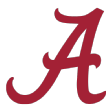
Nate Oats, Alabama: When Oats first got the job in Tuscaloosa, pushing for an NCAA bid seemed like a stretch. But he convinced Kira Lewis and John Petty to return to school instead of transferring, then went out and landed West Virginia graduate transfer James "Beetle" Bolden. The key could be Villanova transfer Jahvon Quinerly, a former five-star recruit who struggled as a freshman. Quinerly is awaiting a decision from the NCAA on a waiver to play immediately. Those four, plus the versatile Herb Jones, would give Oats an outstanding core on which to build. He'll have to figure out the frontcourt, but if Quinerly is eligible, this team is a tourney-caliber group.
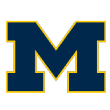
Juwan Howard, Michigan: Yes, there are plenty of questions. How will Michigan transition from John Beilein's system to a new one? How will Howard fare as a head coach, given that he's never been one before? But it's also still Michigan. The Wolverines have won 63 combined games the past two years, getting out of the NCAA tournament's first weekend three straight seasons. And the cupboard isn't bare for Howard. Veteran starters Zavier Simpson and Jon Teske both return, as does Isaiah Livers, who seems poised for a much bigger role. The rest of the roster is fairly unknown, but freshman Franz Wagner is receiving rave early reviews and sophomore forward Brandon Johns was a top-60 recruit. They should go dancing.
Tier 2: Enough to fight for a bid, but questions remain
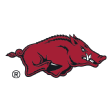
Eric Musselman, Arkansas: Musselman takes over for Mike Anderson, who was let go in March after eight seasons in Fayetteville. After having so much success with transfers at Nevada, Musselman has already brought in five transfers -- including two graduate transfers who should make an immediate impact. But Musselman also returns four starters from last season, including guards Isaiah Joe and Mason Jones. There are going to be growing pains during the transition, and this was still a team that finished 18-16 and lost its best player (Daniel Gafford) to the NBA. But on paper, Arkansas could still compete for a bid.
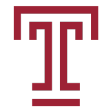
Aaron McKie, Temple: Another first-time head coach, McKie replaces Philadelphia staple and Big 5 legend Fran Dunphy. The Owls only made the NCAA tournament twice in the past six seasons, but there are reasons for optimism this season. Quinton Rose and Nate Pierre-Louis are back on the perimeter, and high-scoring Kennesaw State transfer James Scott should help replace Shizz Alston. The backcourt should be in good hands, but J.P. Moorman will need help up front. The ceiling of this team is likely the bubble, but the top of the AAC is also more crowded than usual and could make it difficult for the Owls to get above the middle of the pack.
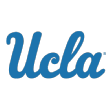
Mick Cronin, UCLA: Year 1 is going to be a massive transition for Cronin and UCLA. Cronin had one of the slowest-paced teams in the country every season during his time at Cincinnati, but it's unclear if he will try to speed things up with the Bruins. While UCLA was picked in the bottom tier of the Pac-12 in the preseason, Cronin has been to the NCAA tournament nine straight seasons and does inherit plenty of on-paper talent. Shareef O'Neal and Tyger Campbell are healthy; Prince Ali, Jules Bernard, Chris Smith and David Singleton are back on the wings; Cody Riley and Jalen Hill are still around up front. It wouldn't be a surprise to see Cronin exceed expectations early.
Tier 3: Rebuild ahead

Fred Hoiberg, Nebraska: This is a tough one to place. There's obviously a rebuild in Lincoln, and the Cornhuskers won't be projected to make the NCAA tournament -- and while there was also a complete roster overhaul needed, the overhaul was essentially done in six weeks. Hoiberg and his staff will bring in two graduate transfers, three four-year transfers, two junior college transfers and four freshmen. Then there's Robert Morris transfer Dachon Burke, who was already sitting out last season. Only one player who played last season is back. It's unproven for the most part, but there will be talent on the floor -- and Hoiberg excelled with these types of rosters at Iowa State. This team might be closer to tier two than tier four.
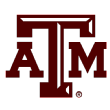
Buzz Williams, Texas A&M: The Aggies are going to be picked toward the bottom of the SEC this season, but there's enough returning talent on the roster and enough trust in Williams to believe this rebuild might not take as long as those facing some other new coaches. Savion Flagg, Wendell Mitchell, TJ Starks and Jay Jay Chandler are all back after starting at least 18 games -- even though the Aggies did finish a disappointing 14-18 last season with that quartet leading the way. It's going to take another recruiting class or two for Williams to get more guys who fit his style, but three former Virginia Tech signees ended up following him to College Station, which is a positive sign. Williams won 11 games his first season at Tech, before improving to 20 wins in Year 2; A&M will have a better Year 1, but a similar trajectory seems reasonable.

Mike Young, Virginia Tech: Losing three starters to graduation and then seeing Kerry Blackshear Jr. graduate and transfer to Florida is a tough situation, but it's better than it could have been. Wabissa Bede and Landers Nolley removed their names from the transfer portal, and then Young went out and landed ESPN 100 guard Jalen Cone, who reclassified into 2020. Tech will be among the worst teams in the ACC this season, but the reason the Hokies are in this tier as opposed to the next one is recruiting. Young has already landed ESPN 100 guards Joe Bamisile and Darius Maddox and has Wofford transfer Keve Aluma sitting out. The Hokies might be back in the middle of the pack by next season.

Jerry Stackhouse, Vanderbilt: Given that the Commodores have won 21 total games the past two seasons and haven't won an SEC game since March 2018, expectations are very low for Stackhouse in Year 1. They're very likely going to be the worst team in the SEC. But here's the bright side: There's only one scholarship senior on the roster; transfers D.J. Harvey (Notre Dame) and Quentin Millora-Brown (Rice) are sitting out; Aaron Nesmith is a pro; and early returns on freshman Dylan Disu are positive. If the roster stays mostly intact and Stackhouse can add a couple of impact pieces in 2020, a rise in the SEC isn't out of the question next season.

Mike Anderson, St. John's: The Red Storm did win 21 games and reach the NCAA tournament last season and bring back two of the best players in the Big East in Mustapha Heron and LJ Figueroa, but this won't happen overnight for Anderson in Queens. The change in style and culture will take time, and an infusion of talent will also take another recruiting cycle. That said, Anderson already and landed ESPN 100 point guard Posh Alexander and is making inroads in the New York area. There's a chance both Heron and Figueroa are gone after this season, though, meaning Anderson could face another tough task in the 2020-21 campaign.
Tier 4: Complete overhaul needed
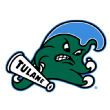
Ron Hunter, Tulane: The Green Wave were dreadful last season, winning four games total and going winless in AAC play, but this wasn't just a one-year dip. Mike Dunleavy won eight total AAC games in three years, and the team hasn't won two straight conference games since February 2016. Hunter does bring energy and optimism, however. He's essentially transforming the entire roster this season, bringing in four freshmen, three graduate transfers and two sit-out transfers who could be eligible immediately, while also regaining the services of two players who sat out last season. Only two contributors from last season are back. Hunter recognized a complete overhaul was needed, and he's trying to do it quicker than the other two schools in this tier.

Kyle Smith, Washington State: If Smith wasn't aware of the task ahead, here's an eye-opener: The Cougars have never finished .500 in the Pac-12. The last time they finished .500 in conference play was in 2011, when the league was still the Pac-10. And they have finished above .500 in league play twice since 1995. This won't be easy. Smith started the rebuild in the spring, bringing in seven new players to help work around sophomore star wing CJ Elleby. Elleby tested the NBA draft waters last spring and could make the jump with another impressive year. This is going to be a trying couple of years in Pullman -- and the only reason the Cougars weren't picked to finish last is California is in an even worse situation.
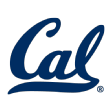
Mark Fox, California: The Golden Bears went from a 4-seed in the NCAA tournament in 2016 to the worst Power 5 team in the country -- by far -- in each of the past two seasons. That's not easy to do, and that's part of the reason Wyking Jones was let go after just two years at the helm in the spring. Cal now turns to Fox, who was fired by Georgia at the end of the 2018 season. He has two stalwarts back in Paris Austin and Matt Bradley, and Texas A&M-Corpus Christi grad transfer Kareem South should help. But this team was so far from being competitive in the Pac-12 the last two seasons, it's hard to see things turning around very quickly. The fan base will have to be patient.
